The content of the article
Plaid is a wonderful warm product that warms in winter and autumn evenings. Each thing is unique in its own way. Plaids are distinguished by the material of manufacture, size, shape, wear resistance. Natural fibers absorb dust quickly and are harder to clean. It is enough to load synthetic blankets into the washing machine and voila, everything is ready.
Hand wash
It is known that not every thing can be sent to a washing machine. This is due to the material and size. Large items simply won’t fit in the drum. In this situation, there is only one way out - hand wash.
Processing in this way can be subjected to a plaid made from almost any fabric. However, if the product is made of cashmere, fur (artificial or natural), hand washing is the only option.
There are 2 basic rules for processing a plaid. Firstly, the water temperature should not be too high (more than 35 degrees). Secondly, it is categorically not recommended to subject the plaid to mechanical impact (wringing, sagging, etc.).
Washing consists of the following steps:
- Perform a preliminary inspection of the product. If you notice dirt, greasy stains or a ballpoint pen, wash the item in advance. Use a solution of laundry soap or dishwashing liquid. Wait a third of an hour, rinse.
- Now rinse the bath, pour water into it. You can use the basin if the plaid is not so big. The temperature of the liquid should not exceed the mark of 35 degrees. If the product has a label, follow it.
- The plaid is washed using shampoo, gel for mashing dishes or a special liquid powder for cashmere, wool or other types of material from which the plaid is made. Pour a little cleaning compound into the bathtub and froth it with your hands.
- Send the blanket into the solution, “drown” it completely, note the time. You need to wait 3 hours. Rinse the product once every 30 minutes and wrinkle it with your hands, but do not twist. Gently rub contaminated areas. Some housewives become clean feet in the bath and stomp things.
- When time runs out, fold the blanket in a pile, drain the soap solution. Re-soak if desired (optional). Spread the plaid over the entire length of the bathtub, draw water inside. Rinse the product to remove foam.
- At this point, you should be patient. Drain and fill the water again until the liquid leaves completely clean and clear. After all the manipulations, leave the plaid out of the water for half an hour.
- When the remaining moisture is gone, start to roll the item. Thus, push-ups are carried out. Many people prefer to stack the blanket or lean against the wall, as you prefer. The liquid drains for 30-60 minutes, wait until the end of the process.
- Now move the blanket, without turning, onto the side wall of the bathtub. Place a basin so that water does not drip onto the floor. Wait until the liquid stops draining at all. Turn the product periodically.
- When the blanket drains, you need to dry it. In order to avoid the appearance of creases and distortion of the form, the product is laid out on a clean horizontal surface (table, floor, etc.).
- In the case when there is no possibility to spread, carefully hang on a few ropes. Avoid direct UV radiation, periodically approach and change sides. Each part must be ventilated.
Washing a plaid in a typewriter
A washing machine, or a household one, allows washing small rugs. Most often, this category includes children's and fleece products that fit easily into the drum cavity.
You do not have to be very sophisticated, a household appliance will do everything on its own. The main thing is to choose a mode suitable for the type of fabric (duration, water heating temperature), add the appropriate liquid detergent.
Again, look at the shortcut that is on things. If the blanket is woolen, you should set the spin speed to not more than 300 units. For other materials - not higher than 400 revolutions. If you set a different indicator, the plaid will lose shape.
Washing includes the following steps:
- Make sure that the device is connected to the network and is working. Load the plaid into the drum cavity. Use only liquid detergent for washing, it does not get stuck in the pile and is easily washed. Pour the composition into the appropriate compartment of the machine.
- If you are washing a colored plaid or items of delicate fabric, in no case do not use a detergent with a whitening effect. Be sure to add rinse-conditioner, which will give things softness and a pleasant smell.
- For all plaids, without exception, you should set a gentle washing program. The “delicate”, “manual” or “wool” mode is suitable. Water temperature should not exceed 35 degrees. Set a program that has no spin at all or assumes a minimum speed indicator.
- Immediately turn off the "drying" mode if available. After the preparations, click "Start", wait for the completion of machine wash. Drying is carried out in a horizontal position or suspended.
- People who live in a big city should use the self-service laundries. In such establishments there are industrial machines, they allow you to wash overall blankets.
Caring for a blanket made of various materials
Microfiber
- You can wash the product by hand or in a typewriter. In the case of the latter option, do not set the water temperature above 60 degrees.
- Give preference to liquid powder. The granular composition is hammered into the pile and makes the thing stiff.
- Dry in a suspended or horizontal state, avoiding exposure to UV rays.
Fleece
- Fleece blankets can be cleaned manually or using a washing machine. The main thing is that before wet processing do not soak the thing in the bathroom, as the material does not absorb dirt.
- Hand wash without detergents. A solution of laundry soap will do. Water temperature should not exceed an indicator of 35 degrees.
- If your blanket is clean, without any visible impurities, dip it in warm water and rinse it several times. Start drying.
- Fleece is famous for drying quickly. After washing, smooth the product and let it lie down. So you exclude creases and remove the need for ironing.
- If washing will be carried out in a machine, set the function “fleece”, “hand wash” or “delicate wash”. Do not handle the thing with other products, do not load the drum cavity “to the eyeballs”.
- When machine washable, the fabric softener should not be added, just like bleaching agents. The first option violates the water-repellent function of the fleece, the second - spoils the structure of the fibers.
Natural materials
Natural materials include cotton, linen, cashmere, wool, silk. Of all these fabrics, a plaid can be made.
- Cotton and linen are washed in the machine or by hands at a temperature of 40 degrees. Detergents are used liquid and gentle (without chlorine). If possible, buy a gel to maintain color. To remove creases, iron the plaid after washing in a slightly damp state.
- As for wool, silk, cashmere, the listed types of fabrics can only be processed manually using cold water (no more than 30 degrees). At the rinse stage, an air conditioner is added. The washing itself is carried out with a liquid gel marked "for silk" (wool, cashmere, etc.). Categorically it is impossible to squeeze and iron such products.
- If the blanket is made of fur (it doesn’t matter, natural or artificial), knock the item before washing. Make sure that dirt is not stuck in the pile. Wet treatment of greasy stains is carried out with vinegar. The washing itself is carried out using shampoo for natural or artificial fur.
There are two main options for washing the plaid - machine and manual processing. Each product has a label with the recommendations of the manufacturer, they must be strictly followed. Before the main manipulations, find out what kind of fabric the thing is made of. Synthetics can withstand everything, but natural fibers require a more scrupulous approach.
Video: 5 life hacks for washing

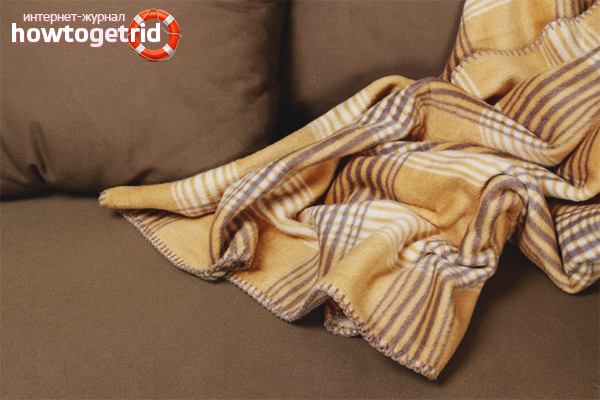
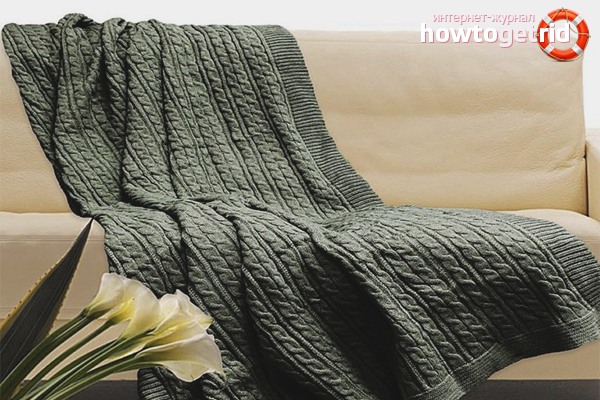


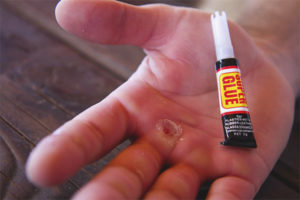

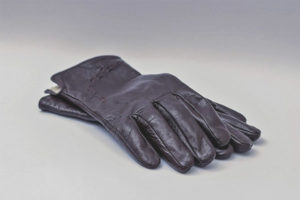


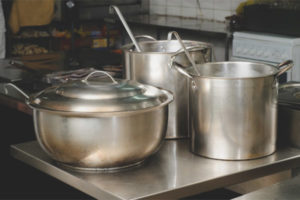
Submit